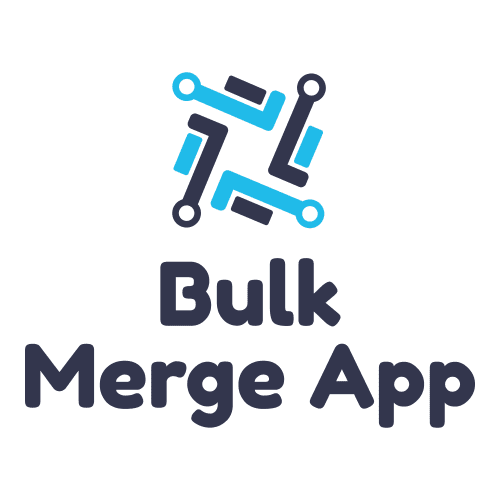The Complete Salesforce CPQ Implementation Guide

If you’re like most business leaders, you’re always looking for ways to shorten your sales cycle and speed up response times, all while delivering great service to your clients.
Salesforce CPQ solutions are one of the best ways to meet those goals. This feature saves time and boosts your bottom line, building customer loyalty.
But what is CPQ in Salesforce (Configure, Price, Quote)?
If you don’t know about the Salesforce CPQ process or flow, this article is here to help. which stands for Configure, Price, and Quote, is a tool that helps your sales team give customers accurate quotes so that they can close deals more quickly.
Access our Salesforce CPQ implementation handbook and learn how to take advantage of everything it has to offer.
Does Salesforce CPQ Require Coding?
No, there’s no coding required for basic implementation and usage of Salesforce CPQ.
Salesforce CPQ automates the sales process for approval representatives with a point-and-click interface. The sales tool will determine the price of anything customer wants to buy in your product offering or product bundles, no matter how complex your pricing models are.
CPQ systems calculate the accurate price based on whatever relevant discounts your company is currently offering. It also considers the existing pricing rules and pricing structure, package deals, customizations, and any other or additional features.
Without CPQ, sales reps often struggle creating quotes or try upselling and cross selling— especially when customers are buying items in an unusual configuration. CPQ configures products guarantees quote accuracy and encourages customers to follow through on their purchases.
Salesforce CPQ Implementation Process
Implementing CPQ is an achievable goal for any business. By following these steps, you can have your whole team using the sales tool in no time.
Step 1: Set Measurable Goals
Each business has a unique set of needs and circumstances. Assess your sales pipeline, and then decide what you want to achieve by using CPQ.
Setting clear, measurable goals makes it easy to evaluate the CPQ and determine whether it’s working and reduces errors.
Some typical goals for CPQ include:
- Reducing the time your sales team takes to convert
- Reducing the time to provide quotes to your prospective customers
- Expanding the average value of customers’ orders
- Increasing repeat business and developing more loyal customers
- Improving the approval workflow
Once you determine which goals are most important to you, start capturing the data. After an initial trial period, go back and assess whether the CPQ is helping you meet your goals.
Step 2: Optimize Your Lead-to-Cash Business Process
Successful leaders are constantly tweaking their lead-to-cash business process. While you’re implementing the CPQ you can, adjust your lead-to-cash process as well.
This will help you design a CPQ workflow that aligns with your existing business workflow. It will help you to take a closer look at your products, along with their add-ons, optional features, and services.
Ask yourself whether your current pricing, discounts, and terms are where you want them to be. Work closely with your sales teams to figure out what needs adjusting in your catalog, based on their knowledge of consumer trends and tendencies.
Once you’re confident, you can input that information into your CPQ. You can customize your CPQ so that it’s easier for your team to find the best deals for each customer, based on that customer’s buying interests.
Step 3: Prioritize CPQ Features
Your team isn’t going to need every single feature available in Salesforce CPQ. There are simply too many features offered.
That’s why it’s a good idea to spend some time customizing the CPQ to meet your company’s unique needs. Go through the features and decide which ones you want to prioritize. There will probably be some features that are low priorities for you, others that are crucial, and the rest somewhere in the middle.
Many businesses find it useful to consult an expert for advice on the best features available for their teams.
Step 4: Initiate System Integration
Congratulations! You’ve set up your products and pricing. Now it’s time to make sure you have the right data pipeline so that your CPQ has all the information it needs.
For the CPQ system to work, it needs data on your latest discounts and deals. It helps when the system can access customer data, so it can generate quotes and recommendations based on the customer’s interests.
You’ll need to give the CPQ access to tax rates, along with any other relevant details about your company’s bundling deals.
Make sure your team keeps this information up-to-date and accurate. You’ll need to make sure your data is clean so that the system can easily “read” and analyze it.
It’s a good idea to put one person on your team in charge of maintaining the data. It’s best practice to run tests before you start using the CPQ company wide.
Step 5: Fine-Tune Sales Workflow
While you’re testing your CPQ, it’s a good idea to look for ways to tweak your existing sales workflow.
You may find that the CPQ speeds up the sales cycle, or that it increases sales of certain items. You may also find that it increases customer loyalty so that you have more repeat business.
These are all great things. But these changes could require you to make some changes to your existing sales workflow.
Step 6: Measure, Track, and Analyze Progress
This is probably a great mantra for any business: measure, track, and analyze. Keep checking to see how the CPQ implementation work for your teams and your customers.
Ask your sales reps whether it’s working for them: Is CPQ the easy to use? Does it give them accurate information quickly? If not, where is the problem, and how can you fix it?
As you fix bugs and meet your goals, remember to keep, measuring, tracking, and analyzing progress.
Consult Salesforce Experts for Salesforce CPQ Implementation
Salesforce CPQ has the potential to dramatically increase sales and boost your bottom line. But the tool isn’t the easiest to implement. That’s why many organizations are partnering with Astreca to get the expert advice they need.
No matter what stage of the process you’re in, Astreca can help. Get in touch today to start on your Salesforce journey.
#CPQBestPractices #CPQConfiguration #CPQImplementation #CPQIntegration #SalesforceConsulting #SalesforceCPQ #SalesforceExperts #SalesforceGuide #SalesforceTraining






